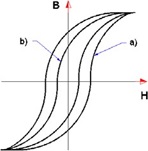Reference no: EM132464594
MITS5003 - Wireless Networks & Communication - Victorian Institute of Technology
Problem 1. Convert the binary data "101010000111" into analog waveforms using following modulation techniques:
a. Two level Amplitude Shift Keying
b. Two level Frequency Shift Keying
c. Two level Phase Shift Keying
d. Differential Phase shift keying
e. Four level Amplitude Shift Keying
f. Four level Phase Shift Keying
g. Eight level Amplitude Shift Keying
Problem 2. For the above techniques, let suppose the time required to send one signal is 1 us. Compute the time required to send the whole data for all the techniques.
Problem 3. With fc = 1000 kHz, fd = 50 kHz, and M = 16 (L = 4 bits), using Multiple Frequency-Shift Keying (MFSK), compute the frequency assignments for each of the sixteen possible 4- bit data combinations.
Problem 4. Draw the approximate Analog Modulation and Frequency Modulation waveforms in complete steps for the following signal:

Problem 5. Draw the 8 QAM Constellation Diagram having two different amplitude levels and four different phase levels.
Problem 6. Considering the figure for the handoff situation and the mobile user is moving from Base station A to Base station B, answers the following questions.

I. At what location, the handoff takes place considering Relative signal strength?
II. At what location, the handoff takes place considering Relative signal strength with threshold TH1?
III. At what location, the handoff takes place considering Relative signal strength with threshold TH2?
IV. At what location, the handoff takes place considering Relative signal strength with threshold TH3?
V. At what location, the handoff takes place considering Relative signal strength with hysteresis?
VI. At what location, the handoff takes place considering Relative signal strength with hysteresis and threshold TH1?
VII. At what location, the handoff takes place considering Relative signal strength with hysteresis and threshold TH2?
VIII. At what location, the handoff takes place considering Relative signal strength with hysteresis and threshold TH3?
Problem 7. Explain and draw the Error Detection Process for Cyclic Redundancy Check (CRC).
Problem 8. Considering the following information:
We have 5 Users/Channels present in a cellular communication network labelled as U1, U2, U3, U4, U5. The Number of total calls in a whole duration of 180 mins for these users are represented as C1, C2, C3, C4, C5 and Number of durations for all the calls for these users are represented as T1, T2, T3, T4, T5. The values for these parameters are given as:
T1 = 5 mins, T2 = 15 mins, T3 = 40 mins, T4 = 70 mins, T5 = 20 mins. C1 = 10 calls, C2 = 15 calls, C3 = 2 calls, C4 = 20 calls, C5 = 5 calls.
Compute the following:
I. Total Occupied Time.
II. Total Number of calls.
III. Mean Occupied time per call.
IV. Mean Rate of Calls per min.
V. Traffic intensity.
Problem 9. Explain why the square and circle shapes cells for cellular communications are not appropriate as compared to hexagonal shape cells.